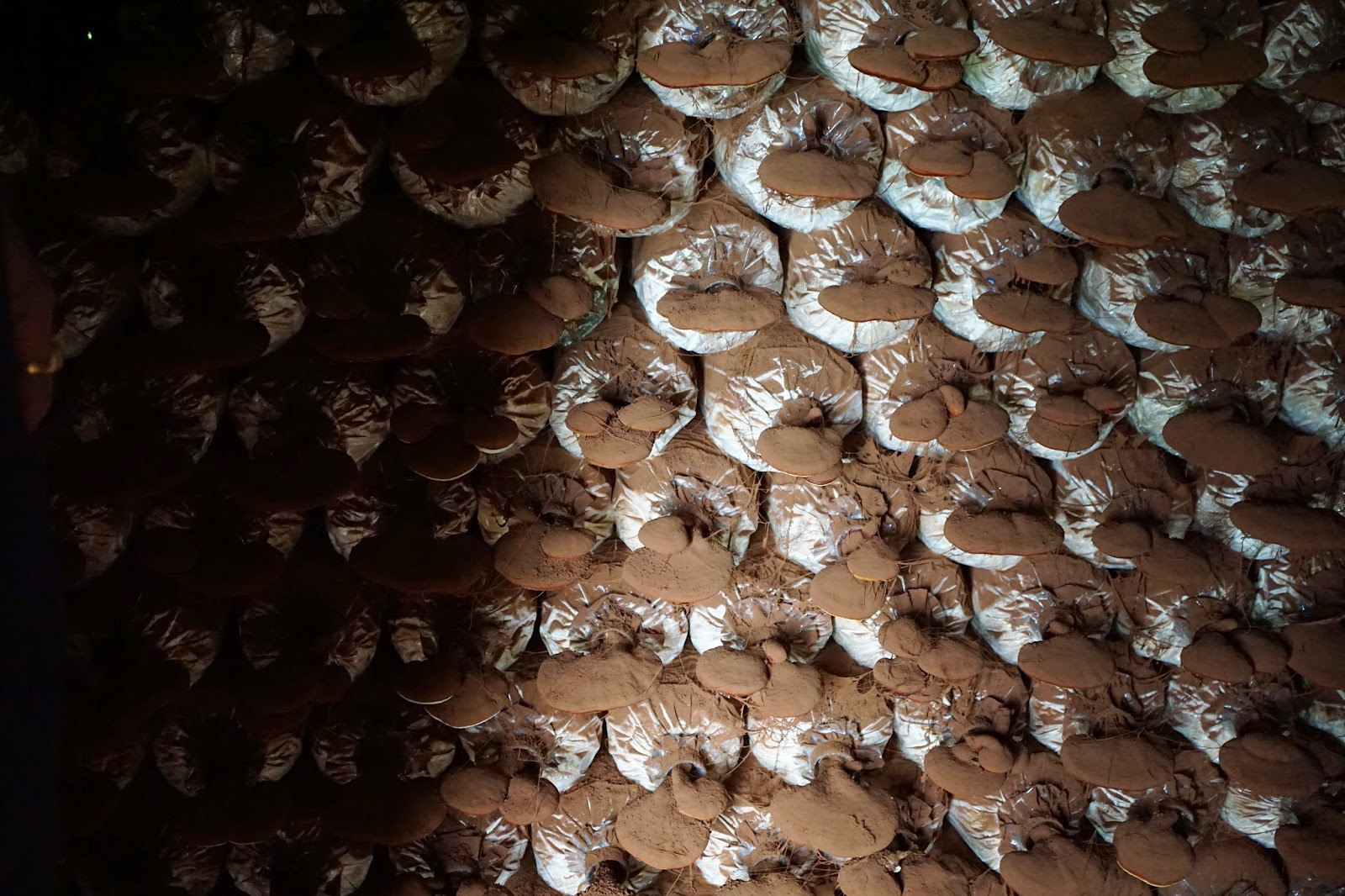 Maejo University is an agricultural university on the outskirts of Chiang Mai. The campus is large and contains many rather scenic agricultural installations but few people.
Maejo University is an agricultural university on the outskirts of Chiang Mai. The campus is large and contains many rather scenic agricultural installations but few people.  We walk through one large building that seems completely empty except for cases of enormous insects mounted with pins. After hearing voices down a hallway, we knock on an office door and discover we are in the wrong building.
We walk through one large building that seems completely empty except for cases of enormous insects mounted with pins. After hearing voices down a hallway, we knock on an office door and discover we are in the wrong building.
A man in the office redirects us to another nearby large white building, where a similar process repeats. I lose the specifics here, as all conversations have been in Thai.
Eventually we find a young man who is knowledgeable about the mushroom cultivation/education program, though I didn’t catch his actual position. At this point, all program specifics and questions are being translated and this kind of mediated conversation invites imprecise language and some inaccuracy, so some details may reflect that.
 The mushroom cultivation area consists of a large covered platform with a pile of substrate, wood or coal-fired steam sterilization stations, and a series of concrete huts. The substrate in this case is rubber tree sawdust, lime to lower the pH, and likely some other nitrogen source. The University experimented with a few different types of substrate ranging from other types of sawdust, rice hulls, sugar cane bagasse, and straw, but settled on rubber tree sawdust because the mushrooms seemed to grow the best on it. All substrates are sourced from local agricultural waste— when a professor at Maejo later describes the program, he emphasizes the focus on sustainability and rural poverty reduction.
The mushroom cultivation area consists of a large covered platform with a pile of substrate, wood or coal-fired steam sterilization stations, and a series of concrete huts. The substrate in this case is rubber tree sawdust, lime to lower the pH, and likely some other nitrogen source. The University experimented with a few different types of substrate ranging from other types of sawdust, rice hulls, sugar cane bagasse, and straw, but settled on rubber tree sawdust because the mushrooms seemed to grow the best on it. All substrates are sourced from local agricultural waste— when a professor at Maejo later describes the program, he emphasizes the focus on sustainability and rural poverty reduction.The program is rather clever, with a three-fold impact. The first impact is the reuse of agricultural waste products, the second is the production of a nutritious and popular food resource, and the third is the creation of an accessible education resource so farmers can fully apply mushroom cultivation practices on their own. The University produces mushrooms and refines the process based on available materials, holds workshops that allow local rural farmers to grow their own mushrooms and purchase pure cultures from the University lab, and sells pre-made inoculated bags to local villagers who don't have the resources to have a full growing operation. These bags sell for 7 baht each, and can produce (in best conditions) 5 flushes of mushrooms, each worth 12 baht, giving the producer ~50 baht of profit ($1.60) per bag.
The young man leads us through their cultivation system, naturally starting with substrate and ending with growing sheds. Notably, this operation is geared towards primary decomposers and doesn't require the substrate composting like farms growing Agaricus species. This makes for a simpler process.
 |
| Substrate and steam pasteurizing equipment. Substrate was mainly rubber tree sawdust. |
 |
| Ash chute in the sterilizer -- a wood/coal fire heats water into steam which is funneled into industrial drums containing bags of substrate |
 |
| Bags of sterilized substrate, ready to be inoculated |
 |
| This strain exudes a dark liquid. Each strain/species' colony looks a bit different. I'm not sure which species this is, as bottles were grouped and labelled in Thai. |
 |
| Closeup of myceliated millet. |
 |
| Inoculated millet seeds visible at the top of a recently sterilized bag of substrate. |
.JPG) |
| "Front" of mycelium as it grows throughout the substrate, top to bottom. It may take a week or more to get to this point. Probably a Pleurotus species. |
 |
| A particularly beautiful growth pattern. Species uncertain. |
 |
| Fully colonized bags, ready to be placed in a temp/humidity (semi)controlled room for fruiting. |
 |
| A stack of bags in the fruiting room. |
 |
| Underside detail |
 |
| The product. |
 |
| Consequences of some form of bacterial contamination. |
 |
| Another product. |
 |
| Product in situ. |
 |
| Ganoderma spp. (lingzhi) growing in a dark shed. The spores are used in cosmetics and the fruiting body is made into a tea popular in Asian traditional medicine. |
 |
| They take a long time to grow, but produce an abundance of spores. Spores and fruiting body command a relatively high price. |
Another major concern with the reuse of agricultural wastes is substrate contamination. While fungi can often break down carbon-based contaminants, they are also capable of accumulating metals. If a metal-containing pesticide is applied to a crop, and the crop is then used for mushroom production, it is possible that the mushroom will be contaminated as well. It is notable that rubber trees are sometimes treated with arsenic trioxide (pesticide).
Thank you achaan Morakot for your kindness and generosity during my time in Chiang Mai.



















